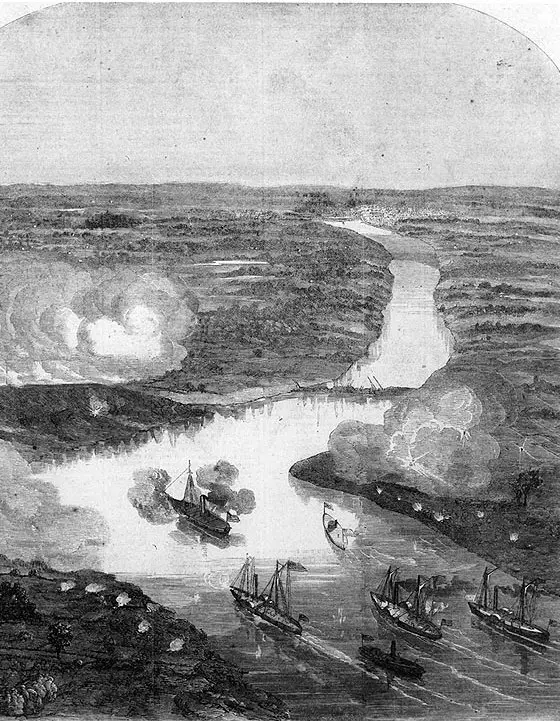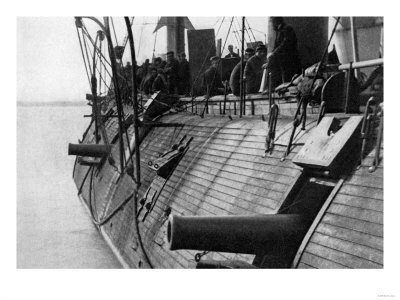|
|
|
"View of the Attack on Fort Darling, in the James River, by Commander Rogers's Gun-Boat Flotilla, 'Galena', 'Monitor'"Line engraving published in "Harper's Weekly", January-June 1862, page 337Depicting USS Galena at the head of the attacking force with USS Monitor off her starboard quarter. Among the other ships, the gunboat Naugatuck is identifiable in the lower right. The city of Richmond, Virginia, is shown in the left center distance. x  |
 Union River Ironclad 1861-65 At the start of the American Civil War, neither side had warships on the Mississippi River. In what would prove the vital naval campaign of the war, both sides fought for control of the river. While the Confederates relied on field fortifications and small gunboats, the Union built a series of revolutionary river ironclads Kindle Available  Confederate Ironclad vs Union Ironclad: Hampton Roads 1862 The Ironclad was a revolutionary weapon of war. Although iron was used for protection in the Far East during the 16th century, it was the 19th century and the American Civil War that heralded the first modern armored self-propelled warships. |
|
|
 Uss Galena Ironclad Giclee Print 24 in. x 18 in. Buy at AllPosters.com Framed Mounted |
Bombardment of Fort Darling, Drewry's Bluff, Virginia, 15 May 1862Artwork published in "Deeds of Valor", Volume II, page 27, by the Perrien-Keydel Company, Detroit, 1907Dedepicting USS Galena in action against the Confederate batteries at Drewry's Bluff.
|
 American Civil War Fortifications Coastal Brick and Stone Forts The design, construction and operational history of fortifications, such as Fort Sumter, Fort Morgan and Fort Pulaski. Stone and brick forts stretched from New England to the Florida Keys, and as far as the Mississippi River. A handful of key sites remained in Union hands throughout the war, the remainder had to be won back through bombardment or assault. |

|
|
Kindle Available Naval Strategies of the Civil War: Confederate Innovations and Federal Opportunism Compare and contrast the strategies of the Southern Secretary of the Navy, Mallory, against his rival in the North, Welles. Mallory used technological innovation and the skill of individuals to bolster the South's seapower against the Union Navy's superior numbers |
| Contemporary pencil sketch, with colors of flags and smoke lightly worked in, depicting the Union ships Galena, Monitor, Aroostook, Port Royal and Naugatuck (listed as shown, left to right) bombarding the Confederate fort at Drewry's Bluff.
|
 Year on a Monitor and the Destruction of Fort Sumter Personal view of the Civil War Navy. The monitor saw action in several significant naval assaults by the Union's Squadron. It took part in the failed Federal attack on Sumter in April 1863. The "Nahant" also participated in the capture of the Confederate Ram "Atlanta," and in the assault on Fort Wagner |
| Sketch, possibly by Edward H. Schmidt (a crewman on USS Mahaska). Items identified by numbers include: |
Kindle Available The CSS Arkansas: A Confederate Ironclad on Western Waters While the Monitor and Merrimack are the most famous of the Civil War ironclads, the Confederacy had another ship in its flotilla that carried high hopes and a metal hull. The makeshift CSS Arkansas, completed by Lt. Isaac Newton Brown and manned by a mixed crew of volunteers, gave the South a surge of confidence when it launched in 1862. |